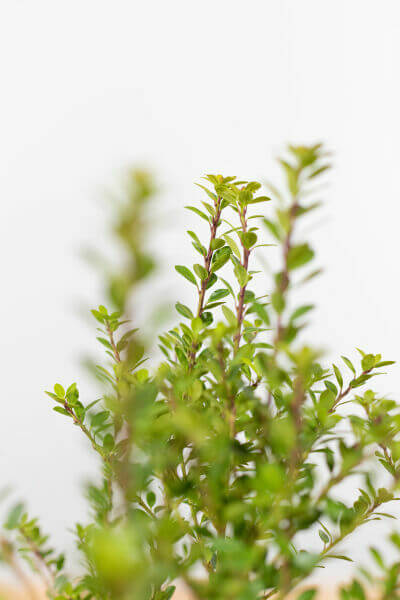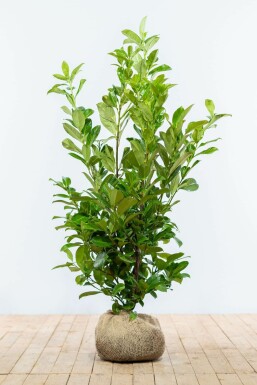Hedge Plants For Commercial Properties
Hedge Plants For Commercial Properties
Blog Article
Hedge Plants For Ornamental Hedges
Boost your garden's allure with lavish hedge varieties such as Yew (Taxus), Thuja, Laurel, Photinia, and Bamboo, commemorated for their structural integrity and ecological benefits.
Yew and Thuja offer evergreen protection and winter strength, while Laurel offers fast development and broad, fragrant leaves.
Photinia includes seasonal appeal with its lively red foliage, and Bamboo lends a low-maintenance, serene atmosphere.
These hedges improve air quality, reduce sound, and develop tranquil, private spaces.
Appropriate planting, spacing, and upkeep ensure vigorous development and ecological harmony.
Check out how these lavish ranges can elevate your garden's beauty and wellness.
Secret Takeaways
Transform Your Garden With Lush Hedge Varieties
- Select Yew for its dense, evergreen development and unrivaled durability.
- Go with Laurel for its fast growth and broad leaves, guaranteeing fast personal privacy.
- Pick Photinia for its vibrant seasonal foliage, which turns a striking dark red.
- Utilize Bamboo for a low-maintenance, winter-hardy hedge with aesthetic appeal.
- Space plants 2-3 per meter and prune routinely for ideal development and health.
Popular Hedge Plants
When changing a garden with lavish hedge ranges, it's important to consider popular hedge plants such as Yew, Thuja, Laurel, and Photinia due to their unique characteristics and benefits.
Yew (Taxus) is highly respected for its durability and thick, green growth, making it a prime option for sustaining landscapes.
Thuja is kept in mind for its evergreen foliage and robust winter season resilience.
Photinia adds seasonal vibrancy with red leaves that darken over time, creating vibrant visual appeal.
Laurel uses quick development and fragrant, broad leaves, ideal for quick personal privacy.
In Addition, Bamboo is an excellent option for atmosphere, offering a low-maintenance, winter-hardy option that boosts the garden's aesthetic with its sophisticated, swaying walking canes.
These selections deal with a variety of horticultural requirements and choices.
Advantages of Garden Hedges
Garden hedges offer a wide variety of advantages, making them an important addition to any landscape. These natural barriers are economical to implement and offer significant wind defense, enhancing air flow and adding to sound reduction. The thick foliage of hedges like Thuja and Beech makes sure privacy by obstructing presence, producing a serene and remote environment.
Hedges likewise play a vital role in microclimate regulation, supplying a stable environment that cultivates plant development and minimizes temperature level fluctuations. Their detailed leaf structures filter contaminants, enhancing air quality and contributing to a healthier garden community.
Moreover, hedges master noise reduction, absorbing and deflecting acoustic waves to lower ambient noise levels. This double functionality of offering both acoustic and visual personal privacy improves the total tranquility and visual appeal of any garden.
Planting and Maintenance Tips
For an effective hedge, careful preparation of the planting area is important. Ensure the soil has appropriate pH and drain to support strong root development.
Area the plants appropriately for the selected types. Water the hedge regularly during its initial development stage, adjusting as needed with seasonal changes.
Execute a organized pest control and disease prevention method, utilizing organic or chemical treatments when needed. Frequently inspect for aphids, mites, and fungal infections.
Apply mulch to retain moisture and suppress weeds. Seasonal pruning promotes thick development and air blood circulation, essential for plant health.
Following these guidelines will help you cultivate a dynamic, properly maintained hedge that enhances the appeal of your garden.
Spacing and Trimming Guidelines
Spacing and Cutting Standards
Proper spacing and cutting are vital for cultivating healthy, visually appealing hedges. Appropriate spacing ensures each plant receives adequate nutrients, light, and air flow.
Follow these standards for optimum hedge upkeep:
- Spacing: Position hedge plants 2-3 plants per meter to encourage robust growth.
- Pruning Methods: Regular pruning is vital for preserving preferred hedge height and shape. Trim new growth in summertime and cut back older wood during winter.
- Seasonal Care: Adjust trimming approaches and schedules according to seasonal requirements to make sure plant health.
- Hedge Height: Frequently screen and trim to maintain the wanted hedge height and attain consistent aesthetic appeals.
Adhering to these actions will guarantee your hedge flourishes, enhancing both the appeal and performance of your garden.
Picking the Right Hedge
Choosing the Right Hedge
Choosing the suitable hedge involves examining elements such as mature height, foliage density, get more info and environmental strength. Successful hedge plant choice needs understanding each types' development characteristics and site-specific flexibility.
For instance, Yew (Taxus) uses exceptional durability and dense growth, while Thuja is significant for its winter season strength. In addition, thinking about maintenance requirements is vital; fast-growing species like Laurel or Privet need regular cutting, whereas low-maintenance choices like Bamboo or Ivy may be more suitable for those looking for minimal maintenance.
Environmental aspects such as soil type, light availability, and wetness conditions should likewise guide the selection procedure. This careful technique guarantees the chosen hedges will prosper, supplying both aesthetic and practical advantages to the garden landscape.
Delivery and Planting Suggestions
To ensure your hedge plants flourish, they need to be provided by specialized couriers and planted without delay upon arrival.
Follow these essential actions for successful planting:
- Soil Preparation: Enhance the soil with natural matter to improve drainage and nutrient content.
- Planting Depth: Create a trench two times the width and equal to the depth of the root ball.
- Watering Methods: Water completely after planting, keeping the soil regularly moist however not filled.
- Mulching: Use a layer of mulch to retain moisture and suppress weeds.
Client Assistance and Service
Offered the crucial role of timely assistance in horticultural pursuits, our client support group is readily available 6 days a week through telephone, e-mail, and social networks to use skilled advice and swiftly deal with any concerns. Their commitment to quick response times ensures customer complete satisfaction by fixing inquiries connected to plant health, optimum planting approaches, and maintenance schedules.

-------------------
Six days a week
This extensive assistance system, enhanced by a stellar 9.3/ 10 customer rating, highlights our commitment to improving the gardening experience for each customer.
Regularly Asked Concerns
The Length Of Time Does It Consider Hedge Plants to Develop?
Hedge plants usually need one to three years to become completely developed, with the precise period varying by species and growing conditions.
Efficient care during this crucial duration is vital for robust development. Consistent watering, alert weed control, and suitable fertilizer application are critical in promoting strong root advancement.
For instance, fast-growing species like Laurel may establish faster, while slower-growing varieties such as Yew may take longer. Thorough upkeep speeds up the establishment process, leading to thick and healthy hedges.
What Are the Finest Hedge Plants for Privacy?
The concern of the very best hedge plants for privacy includes examining evergreen and deciduous alternatives.
Evergreen hedges like Thuja, Laurel, and Cypress supply year-round coverage, ensuring continuous privacy.
In contrast, deciduous hedges such as Beech use seasonal personal privacy, shedding leaves in chillier months.
Key upkeep ideas for privacy hedges include regular cutting, fertilizing in spring, and appropriate spacing-- generally 2 to 3 plants per meter.
Additionally, consistent watering and thorough weed removal are crucial for promoting healthy, thick growth.
Can Hedge Plants Bring In Wildlife to My Garden?
Yes, hedge plants can draw in wildlife to your garden by providing necessary benefits like shelter, food, and nesting websites, consequently boosting regional biodiversity. For example, yew, holly, and laurel are excellent for bring in birds, while ivy supports a variety of insects.
Nevertheless, it is very important to keep in mind that there are some drawbacks, such as increased maintenance to handle pests and routine upkeep. Thoroughly choosing and maintaining hedge varieties can assist balance these advantages and drawbacks, ultimately promoting a vibrant and sustainable environment in your garden.
Exist Any Flowering Hedge Plants Available?
Yes, there are flowering hedge plants offered that can boost the beauty of your garden.
For instance, Elaeagnus, likewise called Olive Willow, produces aromatic white flowers in the fall, including a touch of elegance.
Photinia, another popular choice, showcases vibrant red leaves that develop into an abundant green, developing a dynamic visual effect throughout the seasons.
To guarantee these plants prosper, it's vital to practice proper pruning methods and seasonal upkeep, such as cutting brand-new development in the summer season and cutting back in the winter.
These steps will assist preserve the health and visual appeal of your blooming hedges.
How Do I Avoid Bugs in My Hedge Plants?
To prevent bugs in hedge plants, employ natural pest control techniques and preserve appropriate hedge care. Present helpful pests like ladybugs, which victimize damaging bugs, to develop a well balanced environment.
Frequently examine your hedges for indications of invasion and immediately get rid of any afflicted parts to avoid the spread. Make sure the health of your hedges by using balanced fertilizers and providing adequate water.
Utilize mulching to maintain soil wetness and correct spacing to minimize plant stress and promote robust growth. These practices jointly assist in lessening insect concerns and keeping a healthy hedge.
Conclusion
In essence, picking the best hedge varieties such as Yew, Thuja, and Laurel can change any garden into a tranquil sanctuary. These plants offer year-round greenery, enhance visual appeal, and offer useful benefits like noise reduction and wind protection.
Correct planting strategies, precise spacing, consistent watering, and seasonal cutting are crucial for optimal development.
Reliable shipment services and professional customer assistance ensure a smooth experience from purchase to planting, making it simpler than ever to raise your outdoor area.
Garden hedges provide a wide range of advantages, making them a valuable addition to any landscape. These natural barriers are cost-effective to execute and offer significant wind defense, improving air blood circulation and contributing to sound reduction. The dense foliage of hedges like Thuja and Beech ensures personal privacy by obstructing exposure, creating a secluded and tranquil environment.

Pruning Methods: Regular pruning is essential for keeping preferred hedge height and shape. Trim new development in summer season and cut back older wood during winter.
Report this page